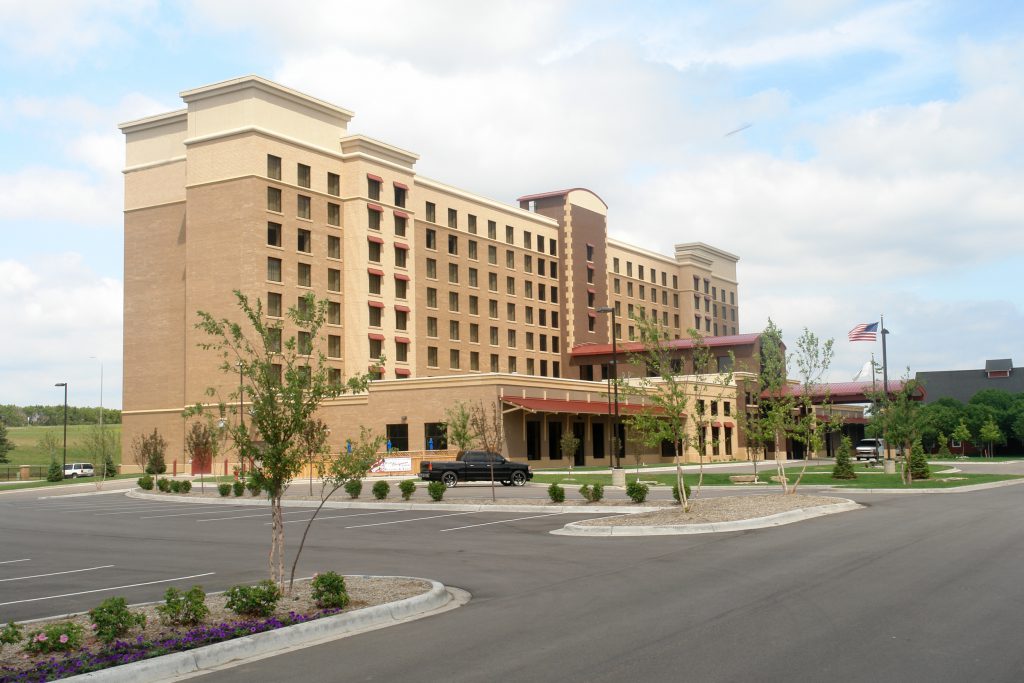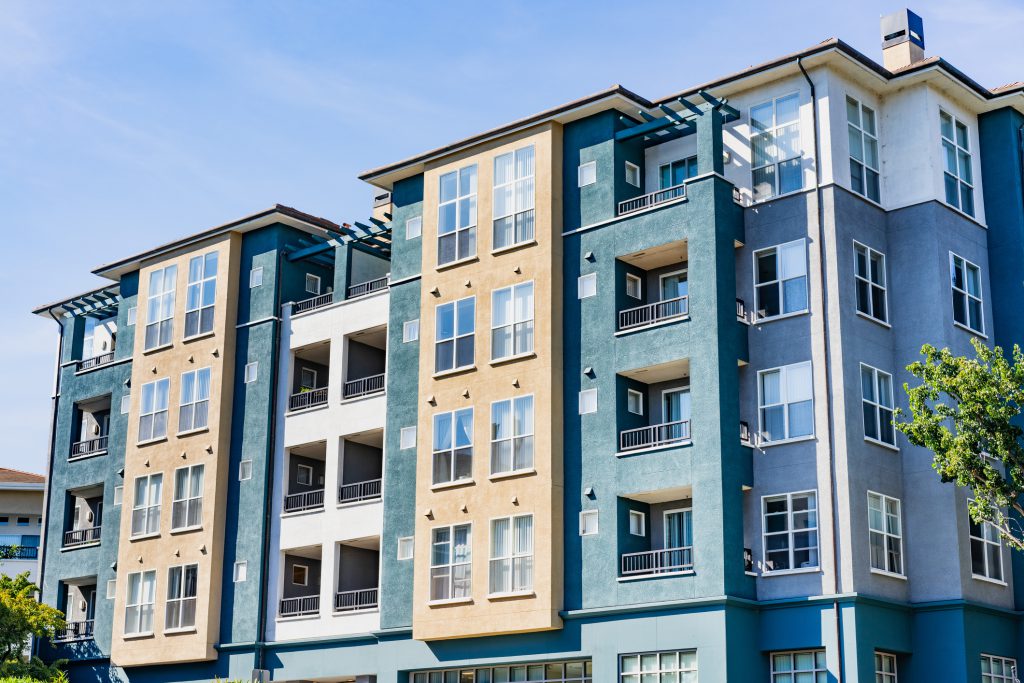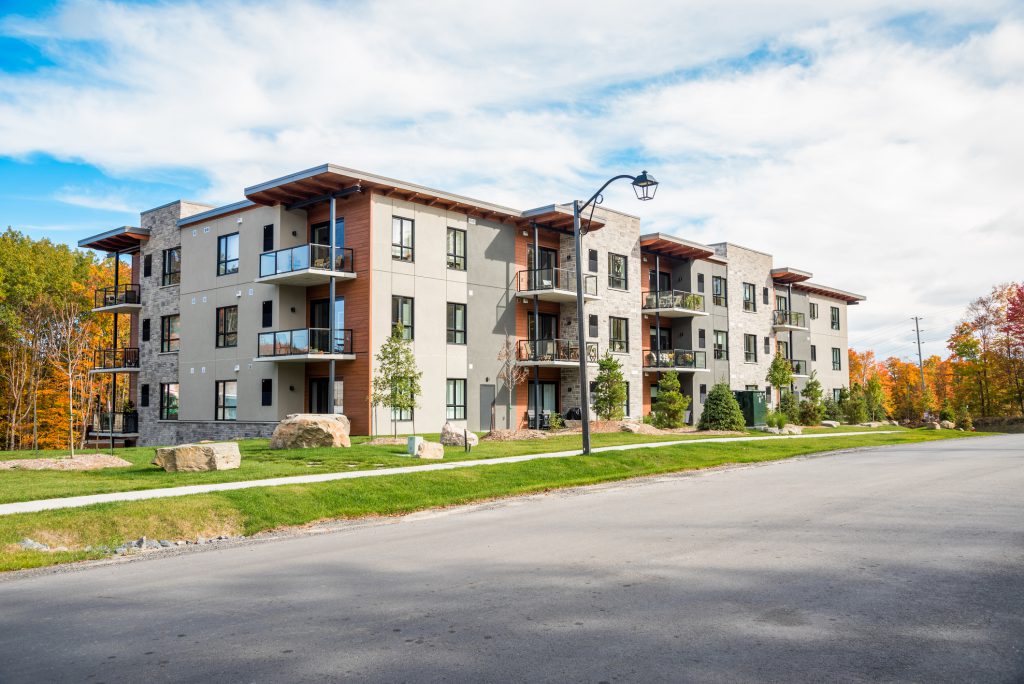Exterior painting is more than a facelift for your building. It’s a defensive investment—protecting structures from moisture, UV damage, and environmental wear while boosting curb appeal and tenant satisfaction. But even well-intentioned property owners and managers can find themselves blindsided by unexpected costs. Vague estimates, unaccounted prep work, and weather-related delays often transform what seemed like a simple project into a budget-busting ordeal.
This guide breaks down every component of budgeting for an exterior painting project—from the type of surface and repair needs to paint system choices, contingency planning, and contractor quotes.
Whether you’re painting a tilt-up warehouse, a brick retail facade, or multi-unit apartment buildings, this blog will help you scope smarter and spend wisely—without unwelcome surprises.
Why Exterior Painting Projects Go Over Budget

Incomplete or Vague Initial Scopes
A typical low-detail quote might say: “Paint building exterior with two coats.” But what does that really mean?
-
Are soffits included?
-
What about railings, parapets, or overhangs?
-
Are the materials stucco, metal, or fiber cement?
Without specificity, it’s easy for a contractor to later say, “That area wasn’t included”—and add fees for it.
Worse, vague product specs like “mid-grade paint” could mask inferior products that require more coats or fail early.
Site Conditions Not Accounted For
A painter might quote a building assuming clean, flat access and sound surfaces—but once they arrive, they discover cracked stucco, rotted trim, or uneven grades that require lifts or scaffolding. Every unaccounted condition can result in a mid-job change order or labor surcharge.
Underestimating Material Needs
Some lowball estimates underquote the gallons needed or exclude primer entirely. This usually results in painters requesting more product halfway through the job—leaving you responsible for unexpected costs.
Skimping on Quality, Leading to Early Repaints
Using lower-tier paint may seem like a smart cost saver—until it starts fading or peeling in under three years. Proper materials and prep might increase upfront cost, but they can double or triple the service life of your exterior.
Step-by-Step Budgeting Guide for Exterior Painting Projects
Step 1 – Define the Scope Clearly
Specify not just the structure, but which components are included:
-
Walls, fascia, soffits, gutters, downspouts
-
Exterior doors and trim
-
Railings, metalwork, fire escapes
-
Exclusions (e.g., roofs, signage, glass trim)
Clarify surface types as well: painted masonry, raw concrete, wood siding, aluminum, brick veneer, etc.
Step 2 – Inspect for Pre-Paint Repairs
Great painters inspect before they paint. If not, you should.
Look for:
-
Hairline or wide stucco cracks
-
Rotten or soft wood siding
-
Rusted staircases or railings
-
Failing caulk at windows and expansion joints
Unaddressed substrate damage compromises paint adhesion and will lead to early failure.
Step 3 – Select the Right Paint System
Different surfaces require specific systems. Here’s a quick-reference guide:
| Surface Type | Recommended Coating | Notes |
|---|---|---|
| Stucco/Masonry | Elastomeric (e.g., Sherwin-Williams Loxon XP) | Bridges cracks, resists water intrusion |
| Wood Siding | 100% Acrylic Latex (e.g., Benjamin Moore Aura Exterior) | Offers expansion/contraction flexibility |
| Metal Surfaces | DTM or Epoxy Hybrid (e.g., PPG Break-Through) | Rust-resistant, ideal for handrails, doors, equipment |
| Faded Surfaces | Bonding Primer + Topcoat | Increases adhesion over chalky or glossy old paint |
Always ask for VOC levels, especially if occupants are nearby.
Step 4 – Estimate Material Quantity Accurately
Use this formula:
Total Surface Sq. Ft. ÷ Coverage per Gallon × Number of Coats
Most paints cover 350–400 sq. ft. per gallon. Add:
-
+10% overage for waste, absorption, and touch-up
-
Primer if surface is porous or changing color drastically
Key Cost Components in an Exterior Painting Budget
Surface Preparation
Often the most labor-intensive part, this may include:
-
Pressure washing (1,500–3,000 PSI)
-
Caulking and sealing
-
Patching stucco or using wood filler
-
Sanding or scraping peeling areas
-
Spot priming bare or repaired spots
Paint and Coatings
Product choices can make or break your budget. Consider:
| Paint Line | Use Case | Price Range (Per Gallon) |
|---|---|---|
| Sherwin-Williams Emerald | Premium durability, color retention | $80–$100 |
| Benjamin Moore Aura Exterior | High-end wood/stucco finish | $75–$95 |
| Behr Ultra Exterior | Cost-effective retail option | $35–$50 |
| Sherwin-Williams Loxon XP | Elastomeric for stucco | $60–$90 |
| PPG Break-Through | DTM for metal or high-wear areas | $60–$80 |
Sheen affects price too: Flat < Satin < Semi-gloss < Gloss.
Labor
Labor generally accounts for 60–70% of your total cost. Factors that influence labor:
-
Building height and access difficulty
-
Number of coats and dry time
-
Detailed trim or metalwork
-
Occupied vs. unoccupied site (safety & scheduling complexity)
Equipment and Access
Expect additional costs for:
-
Boom lifts or scaffolding
-
Safety gear: fall protection, harnesses, barricades
-
Containment or overspray control
-
Transport and setup
Cleanup and Disposal
Final steps often overlooked in quotes:
-
Paint can removal
-
Masking debris disposal
-
Proper handling of solvent-based waste (if any)
Hidden or Overlooked Costs to Watch For

Extra Coats Due to Color Shifts
Painting a light color over a dark one—or vice versa—may require 3 coats or a color-blocking primer, which can raise material and labor costs mid-project.
Lead Paint Mitigation
Buildings built before 1978 may require RRP-certified lead-safe procedures. This can significantly increase labor and compliance costs.
Weather Delays
Rain, wind, or temperatures outside the 50–85°F range can pause work and push labor costs higher. Always include a few buffer days in your budget.
Out-of-Hours Work
If your business operates 9–5, painting crews may need to work after hours. Night or weekend work can add 10–20% in labor costs due to overtime or shift premiums.
Permits or HOA Approvals
Local permits, historical building restrictions, or HOA color approvals can delay start dates and introduce additional admin costs.
How to Request and Evaluate a Transparent Estimate
Insist on a Line-Item Quote
Every quote should break down:
-
Surface prep
-
Materials
-
Paint types and quantities
-
Equipment rental
-
Labor
-
Warranty
-
Cleanup
Ask for Product Specifications
For every product:
-
Brand (e.g., Sherwin-Williams)
-
Line (e.g., Duration vs. A-100)
-
Sheen (flat, satin, semi-gloss)
-
VOC rating
-
Coverage rate (TDS)
This lets you compare apples to apples.
Get a Defined Prep Scope
Example: “Pressure wash 3,800 sq ft of stucco at 2,500 PSI; scrape peeling fascia; caulk all windows; spot prime with Loxon Concrete Primer.”
Clarify Payment Terms
Request milestone billing: e.g., 30% deposit, 40% mid-job, 30% on completion. Avoid full payment upfront.
Contingency Planning for Exterior Painting
Weather Buffer
Schedule 2–5 extra days for unexpected rain or wind conditions. Ensure contractors build this into their timeline.
Color Mistakes
Ordering 1–2 gallons of each paint color for test patches can prevent costly recoloring later. Factor this into your material budget.
Material Price Fluctuation
Paint prices can rise due to supply chain disruptions. Ask how long the quote is valid and if pricing is locked in at contract signing.
Sample Budget Table for a Mid-Sized Commercial Exterior Project
| Cost Component | Estimated Amount |
|---|---|
| Surface Prep | $2,500 |
| Paint & Primer | $4,200 |
| Labor (2 weeks) | $9,000 |
| Equipment Rental | $1,200 |
| Cleanup & Disposal | $500 |
| Contingency (10%) | $1,740 |
| Total Estimate | $19,140 |
This estimate is for a 10,000 sq. ft. facility with multiple surface types and lift requirements.
How to Avoid Budget Surprises Mid-Project

Conduct a Pre-Job Walkthrough
Ideally with the painter present. Document areas of concern: peeling, rot, chalking, rust. Avoids mid-project disputes.
Lock in Product Choices
Changing brands or colors after purchase can incur re-tinting or restocking fees. Confirm choices before the start date.
Confirm Scope and Surfaces
Misunderstandings often arise from ambiguous terms like “entire building.” Define by square footage or elevation.
Get Warranty and Touch-Up Terms in Writing
Reputable contractors offer a warranty (1–5 years) and at least one post-project touch-up visit within 30–90 days of completion.
Conclusion
Budgeting for an exterior painting project involves far more than picking a number per square foot and calling it a day. It requires thoughtful planning—scoping clearly, choosing the right materials, anticipating site needs, and getting contractor quotes that are genuinely transparent.
Don’t let surprises derail your project or your budget. Prioritize prep, product, and planning upfront. You’ll avoid repainting early, minimize business disruptions, and make a long-lasting investment in your property’s appearance and protection.
Planning an exterior repaint this season?
Let our team provide a no-surprise, line-item proposal tailored to your surface type, climate, and occupancy needs. We offer free walkthroughs, smart product guidance, and detailed timelines—so your project stays on track and within budget.

